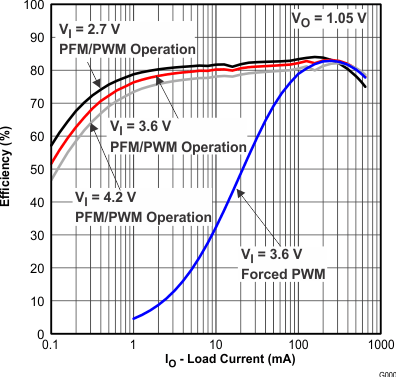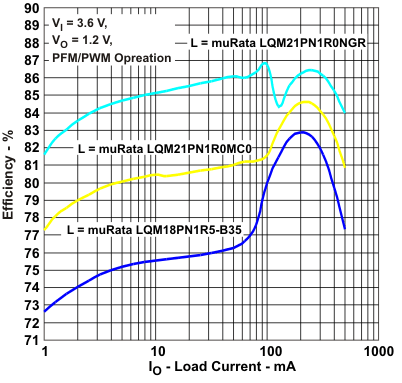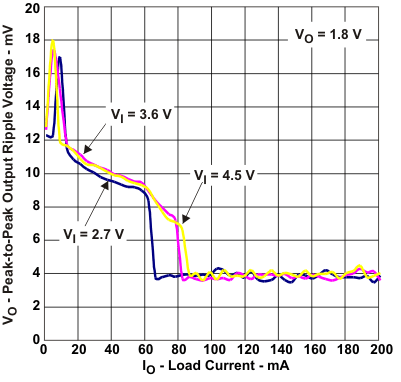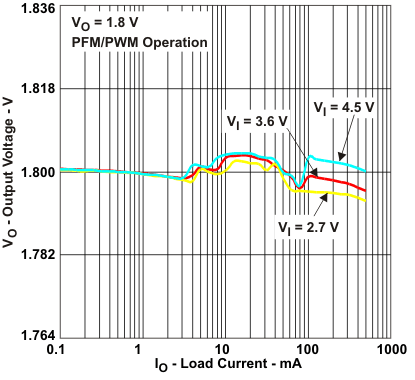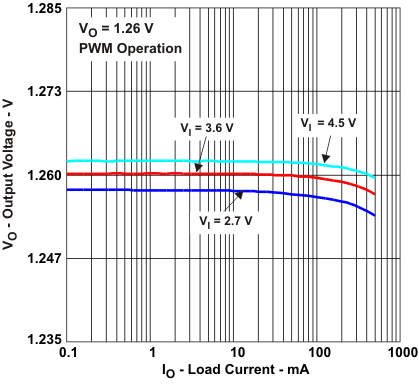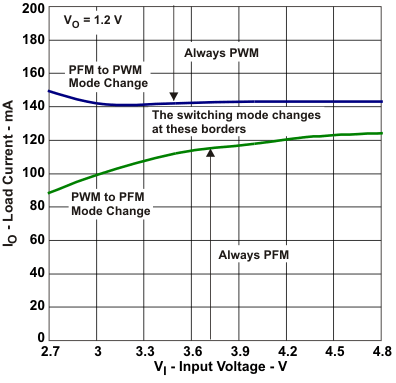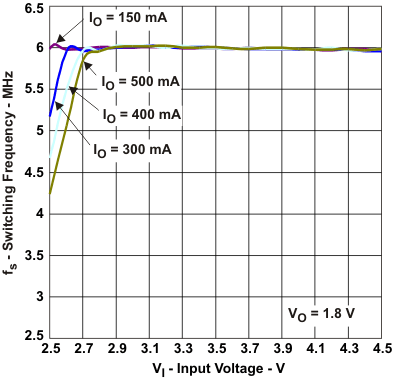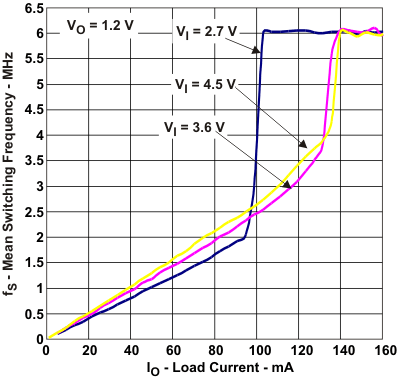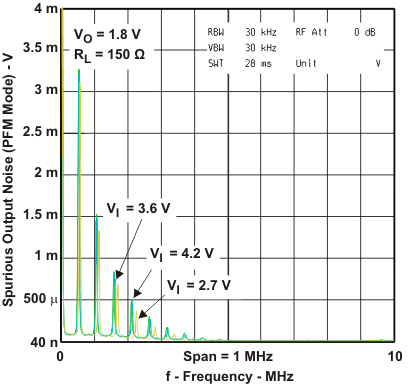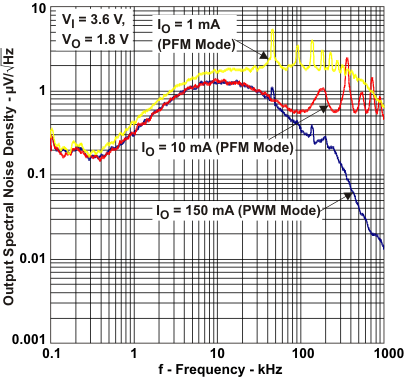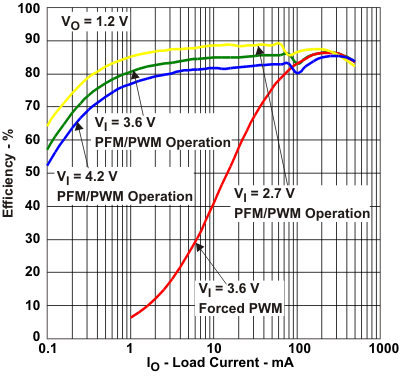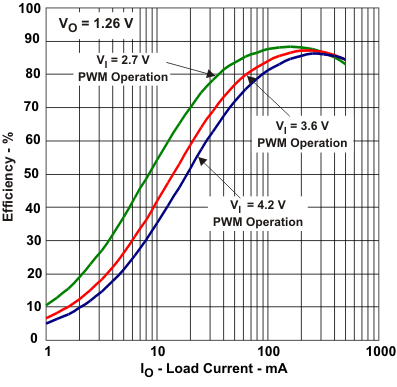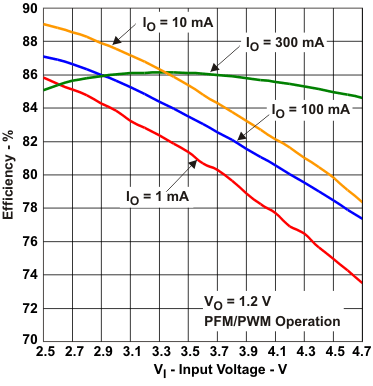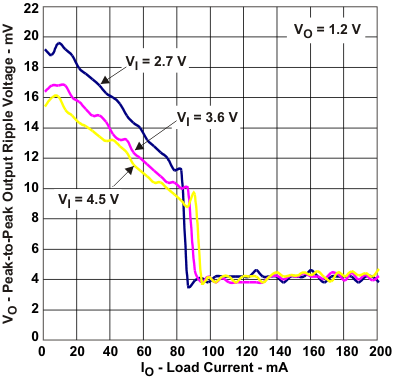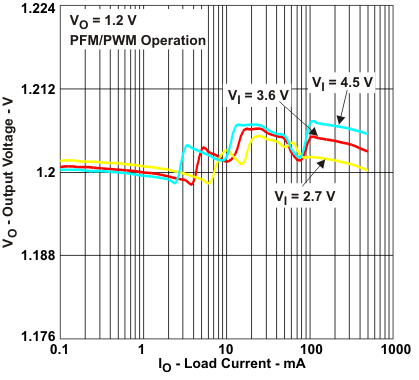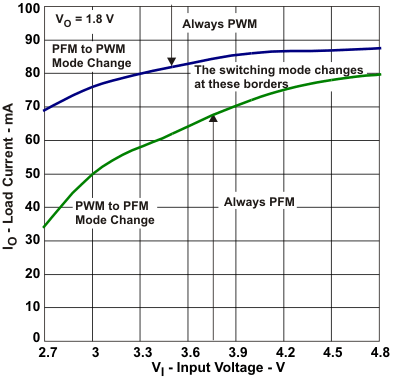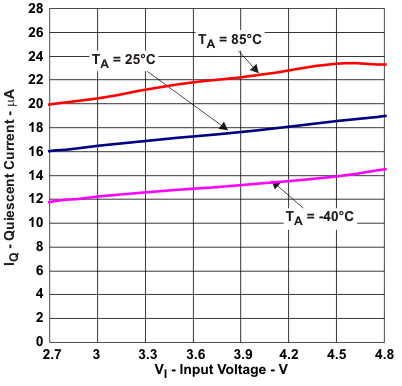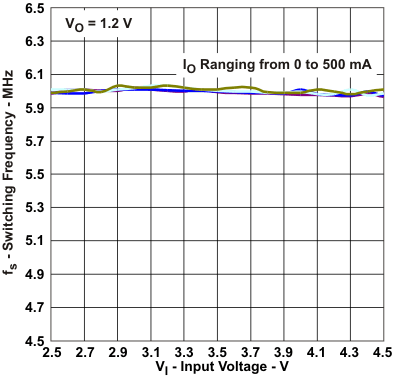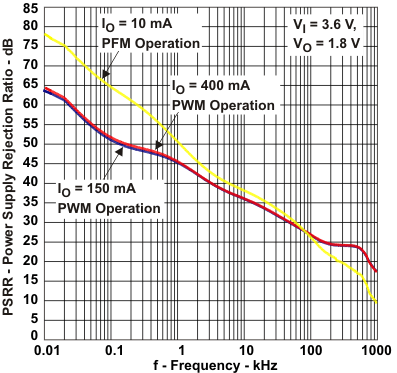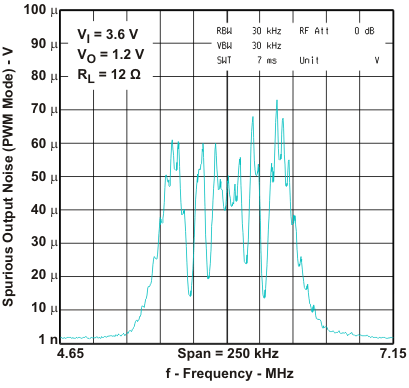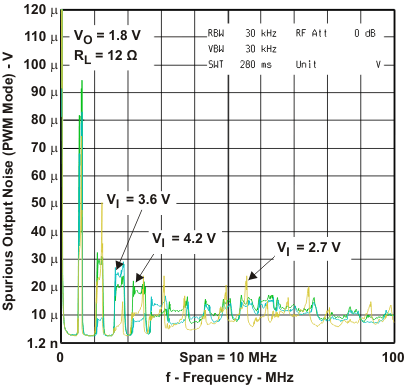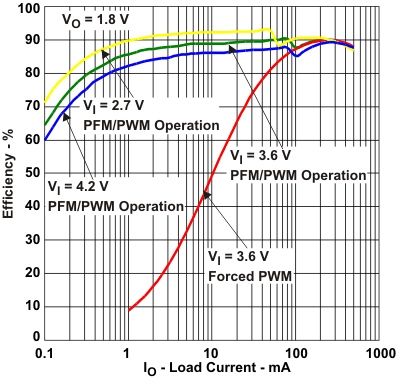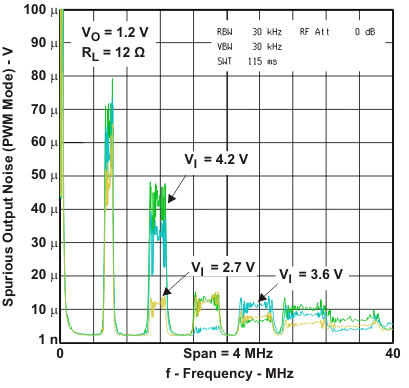SLVS952G April 2010 – January 2017 TPS62671 , TPS62672 , TPS62674 , TPS62675 , TPS626751 , TPS626765 , TPS62679
PRODUCTION DATA.
- 1 Features
- 2 Applications
- 3 Description
- 4 Simplified Schematic
- 5 Revision History
- 6 Device Comparison Table
- 7 Pin Configuration and Functions
- 8 Specifications
- 9 Parameter Measurement Information
- 10Detailed Description
- 11Application and Implementation
- 12Power Supply Recommendations
- 13Layout
- 14Device and Documentation Support
- 15Mechanical, Packaging, and Orderable Information
Package Options
Mechanical Data (Package|Pins)
- YFD|6
Thermal pad, mechanical data (Package|Pins)
Orderable Information
8 Specifications
8.1 Absolute Maximum Ratings(1)
| MIN | MAX | UNIT | ||
|---|---|---|---|---|
| Input Voltage | Voltage at VIN(2), SW(3) | –0.3 | 6 | V |
| Voltage at FB(3) | –0.3 | 3.6 | V | |
| Voltage at EN, MODE (3) | –0.3 | VI + 0.3 | V | |
| TA | Operating temperature range(4) | –40 | 85 | °C |
| TJ | Operating junction temperature | 150 | °C |
(1) Stresses beyond those listed under Absolute Maximum Ratings may cause permanent damage to the device. These are stress ratings only, which do not imply functional operation of the device at these or any other conditions beyond those indicated under Recommended Operating Conditions. Exposure to absolute-maximum-rated conditions for extended periods may affect device reliability.
(2) Operation above 4.8V input voltage for extended periods may affect device reliability.
(3) All voltage values are with respect to network ground terminal.
(4) In applications where high power dissipation and/or poor package thermal resistance is present, the maximum ambient temperature may have to be derated. Maximum ambient temperature (TA(max)) is dependent on the maximum operating junction temperature (TJ(max)), the maximum power dissipation of the device in the application (PD(max)), and the junction-to-ambient thermal resistance of the part/package in the application (θJA), as given by the following equation: TA(max)= TJ(max)–(θJA X PD(max)). To achieve optimum performance, it is recommended to operate the device with a maximum junction temperature of 105°C.
8.2 Handling Ratings
| MIN | MAX | UNIT | ||
|---|---|---|---|---|
| Tstg | Storage temperature range | –65 | 150 | °C |
| VESD | Human Body Model (HBM) ESD stress voltage(1) | –2 | 2 | kV |
| Charge device model (CDM) ESD stress voltage(2) | –1 | 1 | kV | |
| Machine Model (MM) ESD Stress Voltage(3) | –200 | 200 | V |
(1) JEDEC document JEP155 states that 500-V HBM allows safe manufacturing with a standard ESD control process.
(2) JEDEC document JEP157 states that 250-V CDM allows safe manufacturing with a standard ESD control process.
(3) The machine model is a 200pF capacitor discharged directly into ech pin.
8.3 Recommended Operating Conditions
| MIN | NOM | MAX | UNIT | |||
|---|---|---|---|---|---|---|
| VI | Input voltage range | 2.3 | 4.8(2) | V | ||
| IO | Output current range | TPS62671,TPS62674, TPS62679 | 0 | 500 | mA | |
| TPS62672,TPS62675, TPS626751, TPS626765 | 0 | 650 | mA | |||
| L | Inductance | 0.3 | 1.8 | µH | ||
| CO | Output capacitance (PFM/PWM operation) | 0.8 | 2.5 | 10 | µF | |
| Output capacitance (PWM operation) | 0.8 | 2.5 | 10 | µF | ||
| TA | Ambient temperature | –40 | +85 | °C | ||
| TJ | Operating junction temperature | –40 | +125 | °C | ||
8.4 Thermal Information
| THERMAL METRIC(1) | TPS62679 | TPS6267X | UNIT | |
|---|---|---|---|---|
| YFM (6 PINS) | YFD (6 PINS) | |||
| RθJA | Junction-to-ambient thermal resistance | 125 | °C/W | |
| RθJC(top) | Junction-to-case (top) thermal resistance | - | ||
| RθJB | Junction-to-board thermal resistance | 53 | ||
| ψJT | Junction-to-top characterization parameter | - | ||
| ψJB | Junction-to-board characterization parameter | - | ||
| RθJC(bot) | Junction-to-case (bottom) thermal resistance | - | ||
(1) For more information about traditional and new thermal metrics, see the IC Package Thermal Metrics application report, SPRA953.
8.5 Electrical Characteristics
Minimum and maximum values are at VI = 2.3V to 5.5V, VO = 1.8V, EN = 1.8V, AUTO mode and TA = –40°C to 85°C; Circuit of Parameter Measurement Information section (unless otherwise noted). Typical values are at VI = 3.6V, VO = 1.8V, EN = 1.8V, AUTO mode and TA = 25°C (unless otherwise noted).8.6 Typical Characteristics
